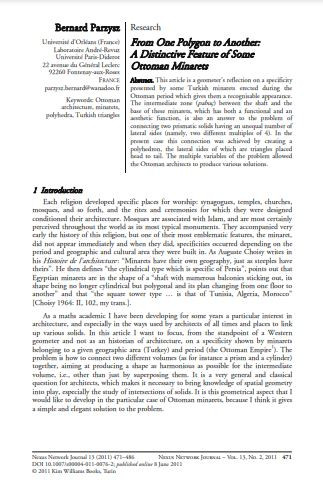
This article is a geometer’s reflection on a specificity presented by some Turkish minarets erected during the Ottoman period which gives them a recognisable appearance. The intermediate zone (pabuç) between the shaft and the base of these minarets, which has both a functional and an aesthetic function, is also an answer to the problem of connecting two prismatic solids having an unequal number of lateral sides (namely, two different multiples of 4). In the present case this connection was achieved by creating a polyhedron, the lateral sides of which are triangles placed head to tail. The multiple variables of the problem allowed the Ottoman architects to produce various solutions.
Parzysz, B. From One Polygon to Another: A Distinctive Feature of Some Ottoman Minarets. Nexus Networks Journal 13, 471–486 (2011).
I agree to the terms outlined below:
You agree to upload and assign Mosqpedia Database the rights to use the content worldwide and in perpetuity across all current and future media platforms. Mosqpedia Database may edit, copy, adapt and translate your contribution.
The content will be distributed under the Creative Commons Attribution-Deed – Attribution-NonCommercial-NoDerivatives 4.0 International – Creative Commons
All data will be stored in line with data protection regulations.